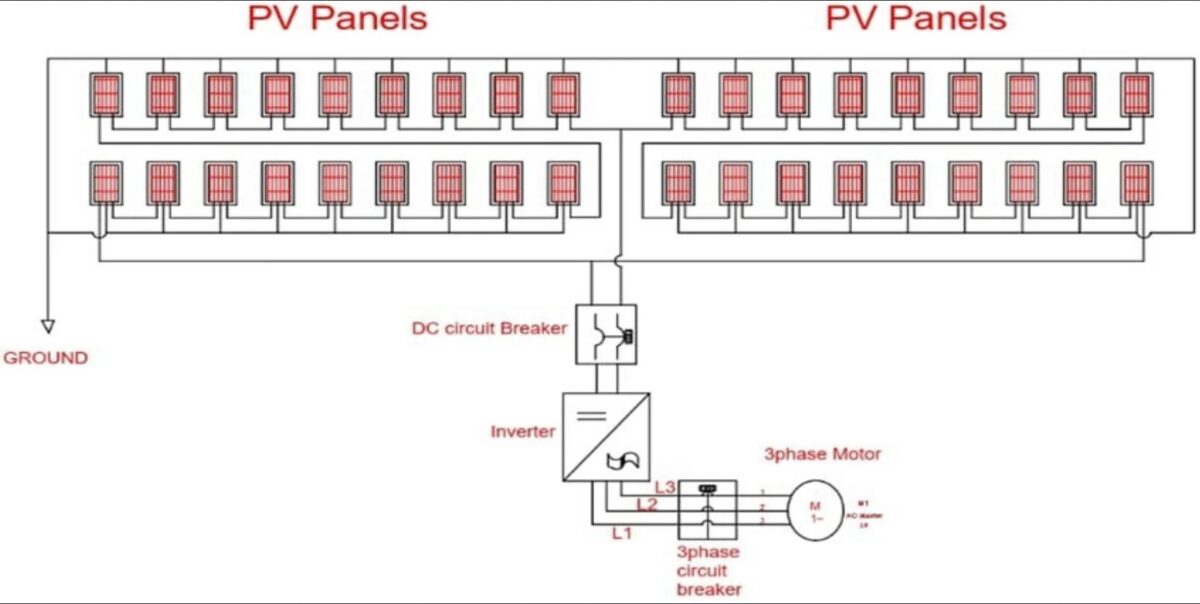A research group led by the Al-Azhar University in Egypt has designed a photovoltaic water pumping system (PVWPS) that can be used to supply water for domestic use, irrigation, livestock watering, and village water supply.
Used mainly for irrigation, PV-powered water pumps are a viable alternative to diesel-powered water pumps in remote areas. “The aim of this work was to study the reliability and performance of the PV-powered underground water pumping system under actual operating conditions, investigate negative impact factors on the PV system, and demonstrate the possibility of relying on this system as a safe and reliable alternative to the traditional energy systems that are expensive and pollute the environment,” the scientists said.
In the paper “Reliability and performance evaluation of a solar PV‑powered underground water pumping system,” published in scientific reports, the researchers explained that the system consists of two PV arrays with each a capacity of 4.6 kW and a pumping unit made up of a 7.5 kW three-phase alternating current motor, a multistage submersible pump, a deep well, and a 15 kW inverter.
They tested the performance of the system by considering, in particular, the hydraulic power of the system and the intensity of solar radiation, which led to the conclusion that the pumping unit efficiency is affected by the intensity of solar radiation, panel temperature, and AC power. “The inverter frequency was directly affected by the direct current produced by solar panels,” they stated. ”
The academics also calculated the overall system efficiency by splitting the system output (hydraulic power) by the system input (solar radiation power), or by multiplying the efficiencies of all system components. “The overall efficiency of the system is directly affected by solar radiation, but when solar radiation exceeds 900 W/m2 at noon, this is accompanied by an increase in temperature, which negatively affects the efficiency of the solar panels and thus the overall system efficiency,” they emphasized.
Popular content
For each increase of 1 C in the temperature, the PV panel efficiency decreased by 0.48%. In turn, the power of the pump has affected the water flow rate, resulting in an average hourly discharge of 18.2, 22.2, and 22.8 m3/h in December, March, and June, respectively.
“The number of operating hours of the pump was 7, 7, and 8 h, and the amount of water pumped during the day was 129, 164.1, and 181.8 m3/ day, respectively,” the researchers added, noting that the overall average system efficiency was 7.40%, 8.46%, and 8.51% in December, March, and June, respectively.
The Egyptian group said the proposed system can provide a stable water supply, provided that negative environmental and technical factors are included in project design. “The design of the solar water pumping system goes through several stages, and some information such as daily water consumption, static water level, and the pumping pipes length and diameter must be known,” it specified.
This content is protected by copyright and may not be reused. If you want to cooperate with us and would like to reuse some of our content, please contact: editors@pv-magazine.com.


By submitting this form you agree to pv magazine using your data for the purposes of publishing your comment.
Your personal data will only be disclosed or otherwise transmitted to third parties for the purposes of spam filtering or if this is necessary for technical maintenance of the website. Any other transfer to third parties will not take place unless this is justified on the basis of applicable data protection regulations or if pv magazine is legally obliged to do so.
You may revoke this consent at any time with effect for the future, in which case your personal data will be deleted immediately. Otherwise, your data will be deleted if pv magazine has processed your request or the purpose of data storage is fulfilled.
Further information on data privacy can be found in our Data Protection Policy.